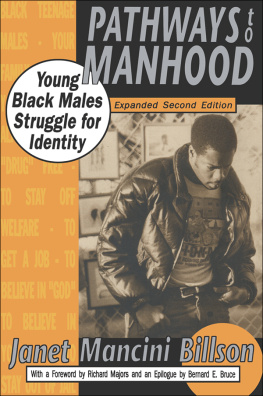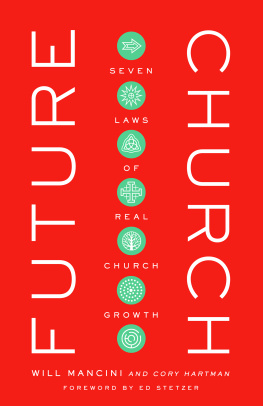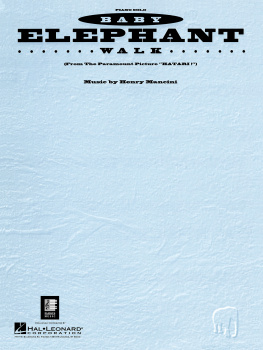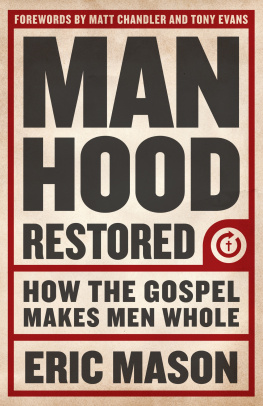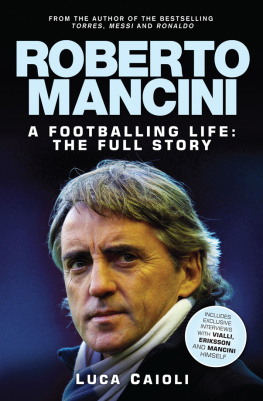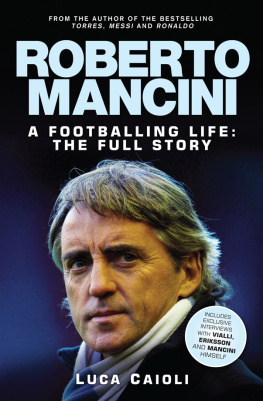PATHWAYS TO MANHOOD
Originally published in 1981 by University Press of New England.
Published 1996 by Transaction Publishers
Published 2017 by Routledge
2 Park Square, Milton Park, Abingdon, Oxon OX14 4RN
711 Third Avenue, New York, NY 10017, USA
Routledge is an imprint of the Taylor & Francis Group, an informa business
New material this edition copyright 1996 by Taylor & Francis
All rights reserved. No part of this book may be reprinted or reproduced or utilised in any form or by any electronic, mechanical, or other means, now known or hereafter invented, including photocopying and recording, or in any information storage or retrieval system, without permission in writing from the publishers.
Notice:
Product or corporate names may be trademarks or registered trademarks, and are used only for identification and explanation without intent to infringe.
Library of Congress Catalog Number: 96-5355
Library of Congress Cataloging-in-Publication Data
Billson, Janet Mancini.
Pathways to manhood : young Black males struggle for identity / Janet Mancini Billson ; with a foreword by Richard Majors ; and an epilogue by Bernard E. Bruce. Expanded 2nd ed.
p. cm.
Expanded ed. of: Strategic styles. 1981.
Includes bibliographical references and index.
ISBN 1-56000-871-7 (alk. paper)
1. Afro-American young menMassachusettsBostonSocial conditions Case studies. 2. Roxbury (Boston, Mass.)Social conditions. 3. Boston (Mass.)Social conditionsCase studies. 4. Afro-American young men Social conditionsCase studies. 5. Adjustment (Psychology) in adolescence MassachusettsBostonCase studies. I. Billson, Janet Mancini. Strategic styles.. Title. F74.R9B55 1996
305.38896073074461 dc20
96-5355
CIP
ISBN 13: 978-1-56000-871-2 (pbk)
CONTENTS
- Epilogue
by Bernard E. Bruce
For my grandfathers,
George E. Billson
and
Clarence A. Ramey,
my father,
Clifford E. Ramey,
my brothers,
James C. Ramey
and
Robert B. Ramey,
and my son,
Mark F. Mancini
... together guys
who have enriched
my life and our world.
First and foremost, the Pathways to Identity boys and their families deserve our deepest appreciation for opening up their homes and lives to interviewers who, although they lived in the same community, were complete strangers. We are all richer for their willingness to speak candidly during trying times. The project fostered a special bond of colleagueship and friendship with Bernard E. Bruce, one of the Pathways co-directors. He provided guidance and inspiration as I struggled to make sense of the Pathways data almost three decades ago, and has devoted hours and energy in trying to locate the boys as they enter middle age (see Epliogue). A valued working relationship has also emerged with Richard Majors, whose enthusiasm about Strategic Styles led to our collaboration on a later work, Cool Pose. He championed the books revival and encouraged me to write a new chapter on the typologys practical applications. These two scholars have given freely of their time and their insights. I owe them an enormous intellectual debt. In 1964 at Kent State University I took The Adolescent in Modern American Society with the late African-American sociologist, Oscar Ritchie. In retrospect I realize how profoundly that course influenced my career. It led me into sociology and left me indelibly intrigued with the dilemmas of adolescence, race, gender, identity formation, and marginality that he so brilliantly interconnected. Later, at Baldwin-Wallace College, Paul Sites taught me to love research and theory alike, and to think of the cultural and community aspects of identity. These issues continue to define the way I do and teach sociology.
During graduate work at Brandeis, the wisdom of Everett Hughes, Lewis Coser, Gordon Fellman, Irv Zola, Morris Schwartz, and Maurice Stein created a contextual framework for the analysis of qualitative data that constantly forced me to make connections between individual experiences and wider societal issues. The greatest debt, though, is to Kurt Wolff, my dissertaion committee chair and chief curmudgeon. Mentor and friend, he brought Strategic Styles to life and taught me to stay close to the boys words while always looking beyond for hidden patterns and broader conceptualizations.
Finally, I want to express my gratitude to Irving Horowitz and Mary E. Curtis of Transaction, who embraced the idea of bringing the Pathways boys back to life in this expanded second edition. Their commitment to African-American studies, in combination with the fine editorial leadership of Karen Stuppi, has made the enterprise seem exceedingly worthwhile.
Pathways to Manhood: Young Black Males Strugglefor Identity is one of the first books to treat coping and identity in the African-American male experience. Janet Mancini Billson has updated her now classic book (published in 1981 as Strategic Styles: Coping in the Inner City) by emphasizing how we can more positively nurture and guide young black males through their critical pre-teen and adolescent years.
While a number of scholars have made significant theoretical contributions on adolescent identity, Billson has advanced our knowledge of coping styles through her unique classification system and case study method. This book also employs a symbolic interactionist perspective, making Billson one of the few sociologists to use this theory in reference to African-American male identity.
Billson anchors her typology of strategic styles in two critical phenomena: interpersonal power and affiliation with others. With the original publication of Strategic Styles, she introduced to a wider, grass-roots audience Robert Mertons work on individual adaptations to the social systemwhich importantly links individual behaviors to social structural issues. Previously, this theoretical framework had been accessible only to the academic community, but it was Billson who popularized Mertons work in a way that the lay person can understand. She developed a sophisticated classification scheme that bridges the theoretical and the real world by providing rich interview data from black youths and their parents, siblings, friends, and teachers.
Historically, a number of scholars have explored coping and adaptation styles among adolescents, but Billson employs a symbolic interactionist perspective in a down-to-earth way that is easily accessible to readers in many fields. She develops a systematic typology driven by careful analysis of the data, but expresses it in practical language grounded in the communitys own observations of The Conformist, The Con Artist, The Tough Guy, The Retreater, and The Together Guy.
Most of the research on black males was deficit-oriented until the late 1960s. Researchers and the general public assumed that the problems black boys encountered in schools, on the streets, or in the workplace meant that something was inherently wrong with them. Then Harvards Pathways to Identity projectwhich provided the data for this book-asked why all black boys growing up in harsh inner-city environments did not become delinquent or disenchanted. With the publication of Strategic Styles, Billson took us out of a deficit psychology approach by looking at a variety of coping styles, including the positive styles of conformity and being cool or together.
Even before studying young black males was considered fashionable, Billsons unique approach helped us look at the complexities of African-American male identity from a more balanced perspective. Subsequently, the 1980s and early 1990s witnessed a turn around from the glass half empty to the glass half full model that she helped establish.

